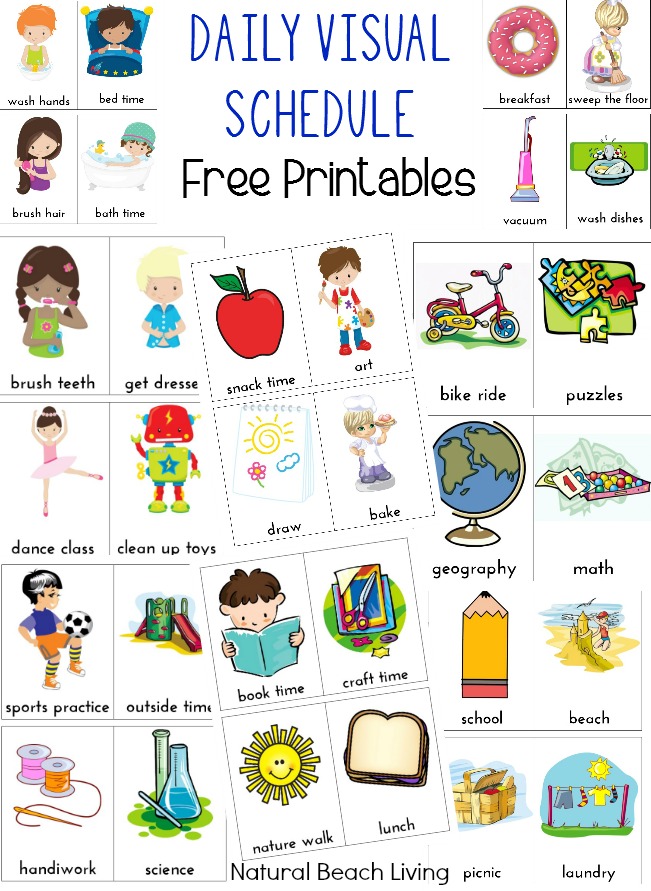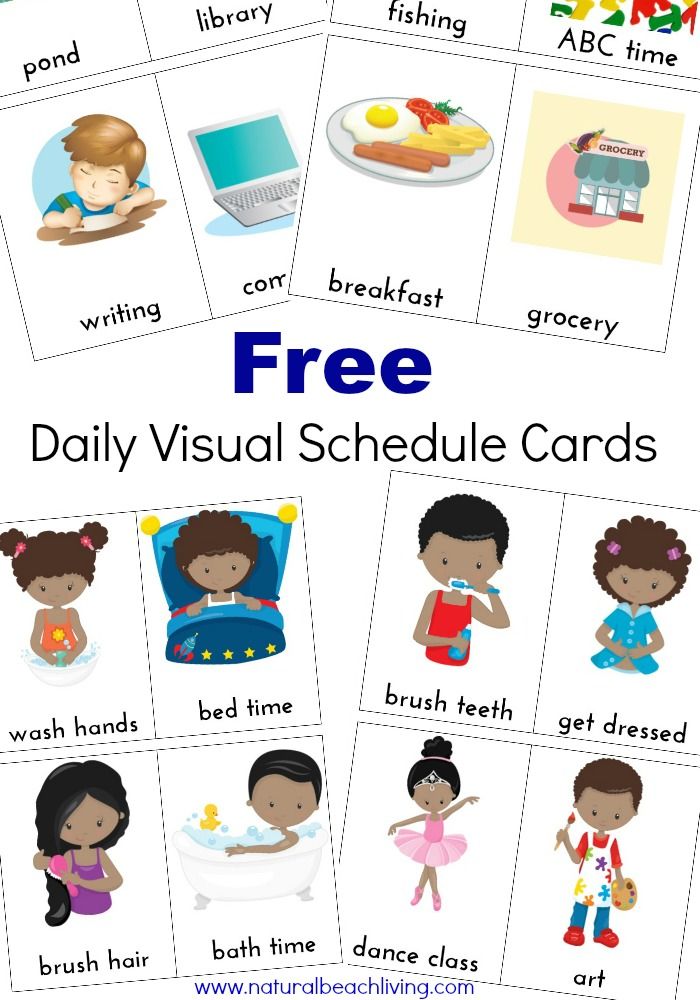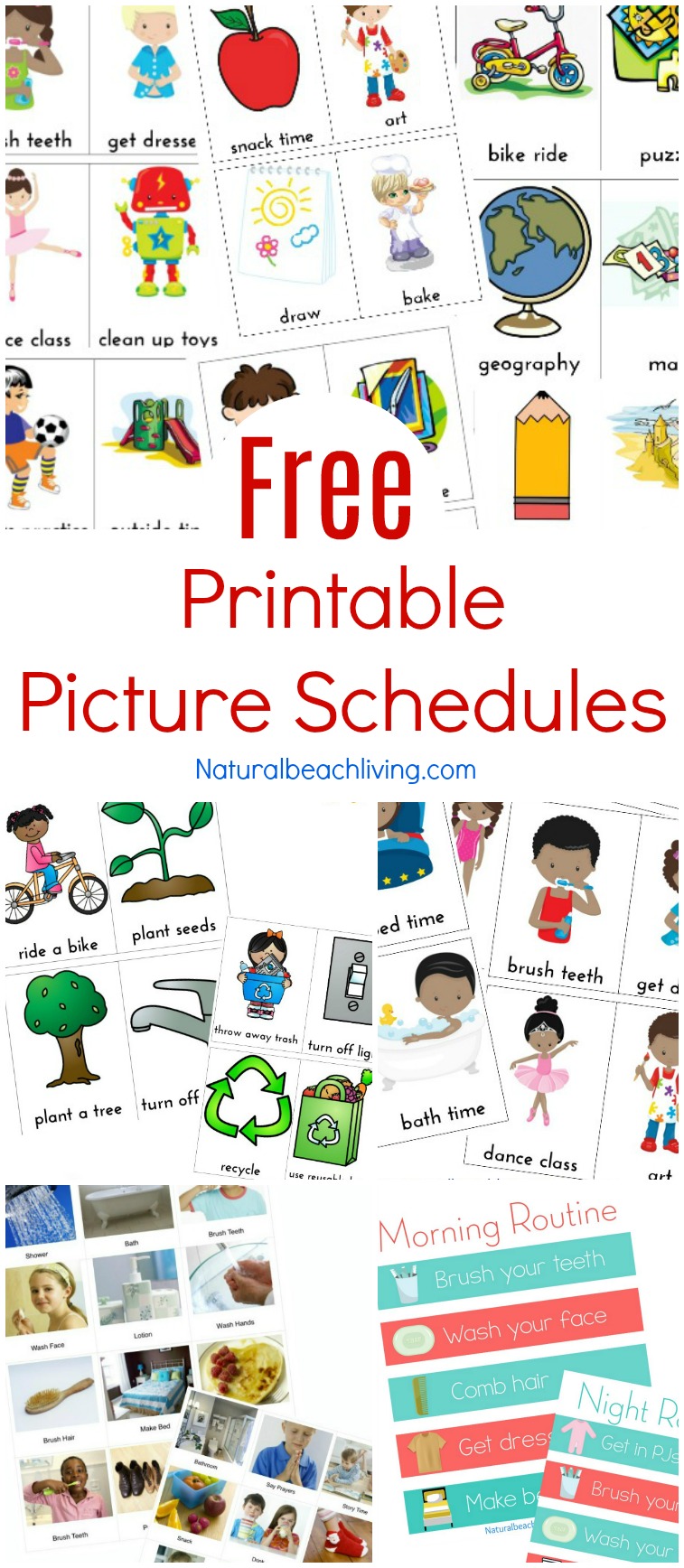Printable Visual Schedule For Autism Visual schedules are an intervention that can help individuals with autism follow a routine transition between activities develop new skills and reduce dependence on caretakers when completing daily activities
Steps in creating visual schedules include Identify time s of the day when visuals are needed This could include transitions and other times of the day or week that are stressful for your students This resource from Autism Classroom provides strategies and resources around using first then schedules with individuals who have autism View Resource This collection of resources includes information about visual schedules and using visual schedules for individuals with autism
Printable Visual Schedule For Autism
 Printable Visual Schedule For Autism
Printable Visual Schedule For Autism
https://cdn.naturalbeachliving.com/wp-content/uploads/2016/02/daily-schedule-printables.jpg
The kit includes Practical examples of how to begin integrating visual supports into a child s daily routines This tool kit is a result of on going activities of the ATN and was developed with the support of a grant from the Health Resources and Services Administration to Vanderbilt University Download our one page overview on visual
Templates are pre-designed documents or files that can be utilized for various functions. They can save effort and time by providing a ready-made format and design for producing different type of content. Templates can be used for personal or expert projects, such as resumes, invitations, leaflets, newsletters, reports, discussions, and more.
Printable Visual Schedule For Autism

Pin On Visual Aids For ASD

Picture Schedule For Preschoolers Free Free Printable Visual Schedule

Make Routine Of An Autistic Child Using Visual Schedule

Teach Love Autism

Circle Schedule For Child Autism Activities Autism Visuals Visual

Free Visual Schedules Visual Schedule Autism Visual Schedules

https://www.healthline.com/health/visual-schedule-autism
A visual schedule is an image based tool that helps support autistic children It presents a sequence of events for what is going to happen during a specific task during an activity or

https://www.speciallearninghouse.com/first-then-visual-schedule
First Then Visual Schedule Use the free printable First Then Visual Schedule with your child or students with autism to provide structure and visual support for your activities at home in the classroom or in your private practice

https://www.milestones.org/resources/tool-kits/visual-supports-tool-kit
Do2Learn offers picture cards that are printable on your computer You can learn how to make visual schedules on this website Handsinautism Google Images offers a wide catalog of photos to reference and print for creating your own supports

https://www.andnextcomesl.com/p/autism-visual-schedule-printables.html
Here you will find lots of autism visual schedule printables including free visual schedule printables and free printable routine cards

https://www.autismspeaks.org/sites/default/files/2018-08/Visu…
Visual supports are used with children who have autism spectrum disorders ASD for two main purposes They help parents commu nicate better with their child and they help their child communicate better with others This brochure introduces parents caregivers and professionals to visual supports and provides instruction on how to use them
Autism Visual Schedule Printables 10 Autism Visual Schedule Printables for Kids Daily Visual Schedule Natural Beach Living Keep your little ones organized during the day with the help of this daily visual schedule Those with Autism or Sensory Processing Disorder will truly benefit from these visual cards For students with autism visual schedules serve as a communication tool that supports receptive and expressive language skills By using simple and concrete visuals students can better understand and follow instructions enabling them to participate more effectively in classroom activities Moreover visual schedules help students with
Visual supports and visual schedules are used to help autistic children improve their skills in understanding and interacting with their physical and social environments Visual supports can have many purposes For example you can use them to help children know what s happening next to signal a change to the normal routine or to